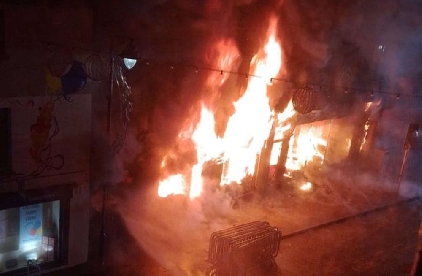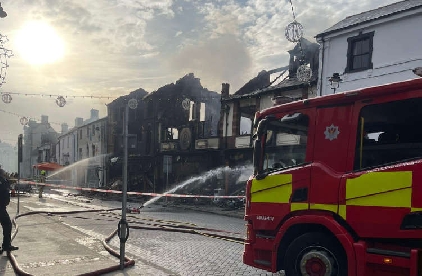
Herefordshire Council has submitted plans to build a monument in honour of the Rotherwas munition factory workers at the county’s archive centre.
Officers have asked the authority for permission to place the stone plinth which will be made up by a natural stone monolith with a black granite plaque at Herefordshire Archive and Records Centre on Fir Tree Lane, Rotherwas.
Its inscription will read: “Dedicated to the munitions workers of Rotherwas who served selflessly during the First and Second World Wars.
“The dangers they faced and the sacrifice they gave for King and Country was offered so bravely.
“This is a record in their honour and a mark of the County of Herefordshire’s gratitude.
“Let those who come after see to it that their service and honour be not forgotten.”
Residents have until February 19 to comment on the proposals which are expected to be considered by March 21.
The Rotherwas National Filling Factory (NFF No14, Hereford) was built in haste in 1916, halfway through the First World War.
Records suggest that about 8,000 munitionettes worked at Rotherwas during the First World War, drawn from all over the UK, and making up to 95,000 shells a week.
For many, the move to Hereford was hugely liberating; the wage packet (albeit less than half as generous as their male counterparts) and the need to live away from home gave them a freedom which had not been dreamed of before the war.
Employees were billeted in Hereford, Ross-on-Wye, Leominster and the surrounding villages, and some took three hours just to travel to and from work, either side of a 10-12 hour shift.
Unlike many other filling factories, Rotherwas was kept open after the First World War and was refurbished in secret ahead of the Second World War – this time with the title of Royal Ordnance Factory No 4, Hereford (ROF No4).
Employees were again predominantly female – estimates vary widely between 3,500 and 10,000 – but this time conscription meant there was much more of a social mix of women, and living conditions were far better, including provision of crèches and travel allowances.
Early in the morning of July 27 1942, a lone German bomber dropped its bomb load of several 250lb bombs after circling the site.
The first bomb landed on Holme Lacy Road killing at least 22 people and injuring 24. The second hit a transit shed and exploded, while the third was deflected into Moorlands Villas where five family members were killed.
It was the home of the Munitions Police Superintendent Ernest Hursey and his wife, Vera. Ken Hursey, their teenage son was the only survivor.

 West Midlands Ambulance study to trial lateral flow test for strokes
West Midlands Ambulance study to trial lateral flow test for strokes
 Former West Mercia officer dismissed after perverting the course of justice
Former West Mercia officer dismissed after perverting the course of justice
 Appeal to find missing Monmouthshire man
Appeal to find missing Monmouthshire man
 Herefordshire Lotto winners appear in iconic image
Herefordshire Lotto winners appear in iconic image
 School contracts worth over £1 million announced
School contracts worth over £1 million announced
 Emergency response exercise held just days before fire ripped through town centre
Emergency response exercise held just days before fire ripped through town centre
 Appeal following Leominster car theft
Appeal following Leominster car theft
 Abergavenny Fire: MP visits "devestating scene"
Abergavenny Fire: MP visits "devestating scene"
